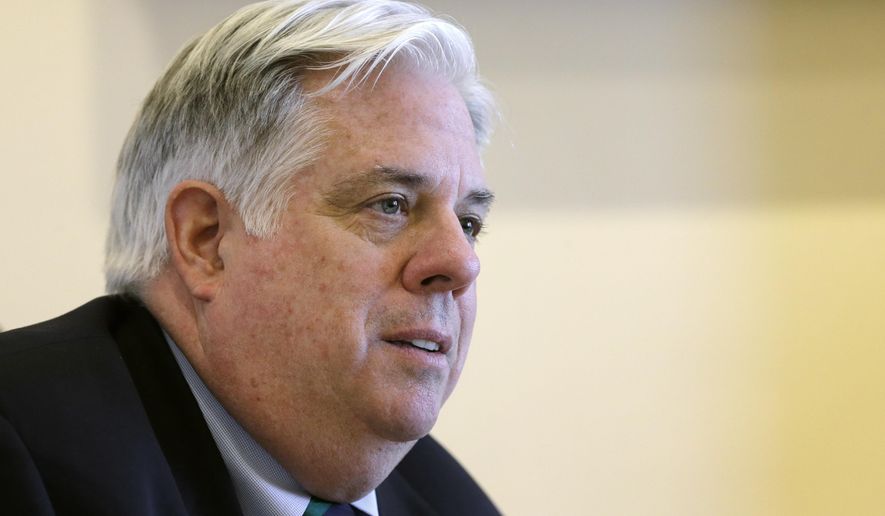OPINION:
The recently ended Maryland General Assembly session was marked by vigorous budget debates — and ended contentiously over a mere $202 million of the state’s $40.7 billion budget. Yet another, far larger and more sweeping budget decision awaits Republican Gov. Larry Hogan. He alone must decide whether or not to proceed with the $2.45 billion Purple Line project, a 16-mile east-west light-rail train that will tax all Maryland residents largely to the benefit of a few wealthy land developers in Montgomery and Prince George’s counties.
Purple Line funding dwarfs many of the critical but contentious expenditure debates during the past legislative session — $68.7 million for state workers’ salaries, $68.1 million for 13 school systems, and $150 million for the grossly underfunded state pension system. Each of these is a pittance compared to the Purple Line.
Purple Line projected costs are $2.45 billion and certain to rise. According to the Locally Proposed Financial Plan provided by the Maryland Transit Administration to the U.S. Department of Transportation Federal Transit Administration, the Purple Line will cost the state $738 million up front, plus $729 million in loan repayments. There is also another $81 million line item labeled “Private Equity and Borrowed Funds,” but there is no explanation of their source or terms. Most likely, they are the “private” contribution in the public-private partnership (3.3 percent of the total price tag). Additionally, according to MTA documents on the Maryland Department of Transportation website, Montgomery and Prince George’s counties are on the hook for $240 million; Montgomery County’s share is $160.5 million according to the latest MTA Capital Programs Summary.
Once in place, the Purple Line is projected to have an annual operating cost of $54.5 million, another set of expenses that the state and counties will have to cover. Projected costs are based on only 30 percent engineering completion.
That’s the money part; here is the myth part. The entire Purple Line financial plan rests on the federal government being a major contributor — funding $900 million, or 36.8 percent, of the currently projected total Purple Line cost. While Purple Line proponents constantly claim that canceling the project would leave $900 million in federal dollars “on the table,” this is myth. These federal dollars have not been appropriated nor are they guaranteed.
This fact is made clear on the FTA website where the Locally Proposed Finance Plan funding table is part of the Purple Line’s project profile. At the base of the table is a note: “The financial plan reflected in this table has been developed by the project sponsor and does not reflect a commitment by DOT or FTA.” In other words, Congress has to appropriate the money. Then the Department of Transportation and FTA have to approve the money as part of a Full Funding Grant Agreement. These are complicated, multiyear steps that could be easily derailed by federal budget cuts. Right now, the $900 million is just part of Maryland’s wish list. Being in the table is a far cry from being on the table.
Mr. Hogan is beginning his term with promises of leadership, service and fiscal responsibility. The Purple Line decision is an early and critical test.
• Melissa Foxman is the founder of Save Our Shared Neighborhoods, a grass-roots organization opposed to the Purple Line.




Please read our comment policy before commenting.